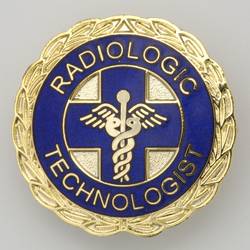

A radiologic technologist, also may be known as medical radiation technologist and as radiographer, performs imaging of the human body for diagnosing or treating medical problems. Radiologic technologists work in hospitals, clinics, medical laboratories, government agencies, industry and private practices. Radiologic technologists use their expertise and knowledge of patient handling , physics ,anatomy, physiology, pathology and radiology to assess patients, develop optimal radiologic techniques or plans and evaluate resulting radiographic images.
The ARRT is a national organization that seeks to set high standards for Radiologic Technologists by creating examination procedures, ethical standards, and continuing education requirements. Many states take ARRT exam scores into consideration when determining whether or not to license an individual. Being certified and registered with the ARRT is also an indicator to prospective employers that you have met nationally recognized standards and that you are fit to be employed in a radiology position.
The ARRT offers the following primary and continuing education certifications:
Primary ARRT Certification Categories
Continuing Education ARRT Certifications
Before you can take the ARRT exam, you must have received formal training from an accredited radiology school. Use our radiology school directory to find an accredited radiology school or search for radiology schools in your state.
The general radiographer exam consists of five sections on positioning terminology and technique, radiographic procedures, image production and evaluation, equipment operation and quality control, radiation protection, as well as patient care and education. The following chart gives you a snapshot of how the test is broken down:
| Radiographer Test Categories | % of Test | # of Questions |
|---|---|---|
| Radiation Protection | 20% | 40 |
| Equipment Operation & Quality Control | 12% | 24 |
| Image Production & Evaluation | 25% | 50 |
| Radiographic Procedures | 30% | 60 |
| Patient Care & Education | 13% | 26 |
| Total | 100% |
Radiography professionals fill a vital role in the detection and diagnosis of diseases, cancers and other patient injuries, and can help treat illnesses as well. Radiographers can also assist surgeons and other physicians to minimize the risks of surgery by providing detailed, internal images of the patient's body during the surgery.
Radiography opportunities are available for people with a wide variety of skill sets and education levels. Radiography careers often include working with one the following:
The field of radiography spans a variety of different occupations, including the following:
While some radiographic technologist positions are available for individuals without a degree, many positions may require an associate or a bachelor's degree in addition to the completion of a certification program. Some states require operating radiographers to be licensed, the BLS reports. Check with your state to determine your licensure requirements, as regulations vary by state.
Sources:
Bureau of Labor Statistics, U.S. Department of Labor, Occupational Outlook Handbook, 2012-13 Edition, Radiologic Technologists - http://www.bls.gov/ooh/healthcare/radiologic-technologists.htm